Grocery shopping can feel like an endless cycle of spending, but there are simple tricks to save significant amounts without compromising on quality. By adjusting your habits and being strategic about your purchases, you can slash your grocery bill in half. From avoiding impulse buys to taking advantage of bulk deals, these smart approaches will help you keep more cash in your pocket. Let’s explore the best tricks for reducing your grocery expenses.
1. Shop the Perimeter of the Store

Most grocery stores are designed so that the perimeter holds essential, whole foods such as fresh produce, dairy, and meat. This layout can help you stick to healthier options, which often are less expensive than processed, convenience foods found in the aisles. By sticking to the perimeter, you avoid the higher-priced, highly processed snacks and meals that can add up quickly. According to Real World Nutrition, avoiding these aisles and focusing on the perimeter can help reduce unnecessary spending.
Shopping along the perimeter also means you are purchasing more whole, unprocessed foods that tend to be healthier. A diet focused on fresh produce and whole grains not only saves money in the long run but is also beneficial for your overall health. When you make fewer impulse purchases and stick to fresh staples, you will likely reduce food waste as well. This strategy can help you save both money and time by simplifying your grocery list and avoiding the temptation to splurge.
2. Buy in Bulk When Possible

Buying in bulk is an effective way to lower the per-unit cost of items you use regularly, says Business Insider. Staples like rice, pasta, grains, and canned goods are often significantly cheaper when purchased in bulk. This allows you to stock up on long-lasting items without worrying about frequent trips to the store. Bulk purchases also reduce the packaging waste associated with individually packaged products, which is an added bonus for environmentally conscious shoppers.
When buying in bulk, make sure you’re buying items that have a long shelf life to ensure they don’t spoil before you can use them. Items like flour, sugar, dried beans, and oatmeal are perfect bulk buys. In addition to staples, some stores offer bulk discounts on spices, which can be especially useful for anyone who cooks frequently. By shifting to bulk purchases, you can get better prices for many of the items that make up the foundation of your grocery list.
3. Use Coupons and Discount Apps

Coupons are a tried-and-true method for slashing grocery bills, and modern technology has made them more accessible than ever. Many grocery stores offer digital coupons via their apps, which you can simply load onto your account for instant savings. In addition to store-specific apps, third-party apps like Honey or Ibotta can also help you find deals across a variety of grocery stores. According to Forbes, people who consistently use coupons save an average of 10-20% on their grocery bills.
Beyond traditional coupons, some apps also offer cash-back rewards when you make certain purchases. These rewards can add up quickly, providing extra savings over time. Some apps even allow you to track sales at local stores so you can plan your shopping trips to coincide with discounts. By integrating couponing into your grocery routine, you can significantly cut costs without much extra effort.
4. Plan Your Meals and Stick to a List

Meal planning is one of the most effective ways to reduce your grocery bill and avoid impulse purchases. By planning your meals for the week and making a shopping list, you can buy exactly what you need. According to Good Housekeeping, those who plan their meals typically spend less on food because they are less likely to make unplanned purchases. Plus, a well-thought-out list will help you stick to your budget and avoid duplicate items you may already have at home.
Meal planning also helps prevent food waste, a major contributor to higher grocery costs. When you know what you’re going to cook, you can buy ingredients that work together and use up leftovers efficiently. Additionally, meal planning lets you take advantage of sales and specials without being tempted by non-essential items. Over time, this strategy helps you make fewer trips to the store and spend less money per trip.
5. Shop Seasonally
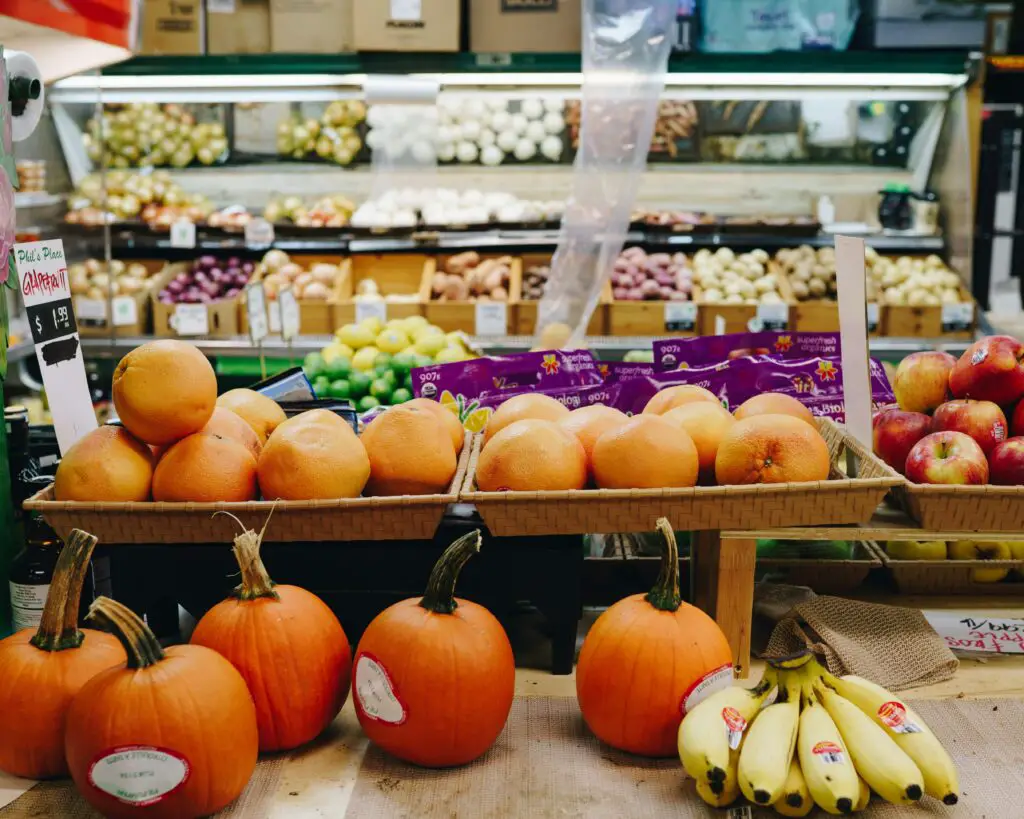
Buying produce that is in season is one of the easiest ways to lower your grocery bill. Seasonal fruits and vegetables are typically more abundant, which lowers their prices and ensures you get fresh, high-quality produce. For example, in the summer months, berries, tomatoes, and cucumbers are usually more affordable, while root vegetables like potatoes and carrots are cheaper in winter. Eating seasonally can cut your grocery costs significantly, especially for fresh produce.
In addition to being more affordable, seasonal produce often tastes better because it’s at its peak ripeness. Buying what’s in season helps you enjoy foods at their freshest and most flavorful while saving money. Many grocery stores even have sections dedicated to seasonal produce, which makes it easy to identify what’s on sale. By planning meals around what’s in season, you can optimize both cost and flavor.
6. Buy Store Brands Instead of Name Brands

Store-brand products are often just as good as name-brand options, but they come at a fraction of the price. These items are frequently made by the same manufacturers who produce the name brands, meaning the quality is comparable. Studies have shown that shoppers can save up to 25% by switching to store brands. Many store-brand products outperform name brands in blind taste tests, making them a smart and affordable choice for your pantry.
Switching to store brands isn’t limited to just pantry staples like canned goods or pasta. Many stores offer their own versions of dairy products, cleaning supplies, and even frozen foods. These products are typically priced much lower than their name-brand counterparts and offer the same quality. By making the switch to store brands, you can reduce your grocery bill without compromising on taste or quality.
7. Avoid Pre-Cut, Pre-Packaged Produce

While pre-cut fruits and vegetables may seem convenient, they come with a higher price tag. Pre-cut produce is processed and packaged, which adds to the cost, and it often has a shorter shelf life than whole produce. Buying whole fruits and vegetables and cutting them yourself is significantly cheaper. In fact, pre-packaged veggies can cost up to twice as much as buying the whole version.
Buying produce in its whole form also allows you to purchase only what you need, which can help you avoid waste. You can buy larger quantities of fruits and vegetables and store them properly to ensure they last longer. By investing a little extra time to cut and prepare produce yourself, you can save money and enjoy fresher ingredients. Over time, this strategy can lead to significant savings, especially if you frequently purchase pre-cut items like salad greens or chopped fruit.
8. Buy Frozen Instead of Fresh
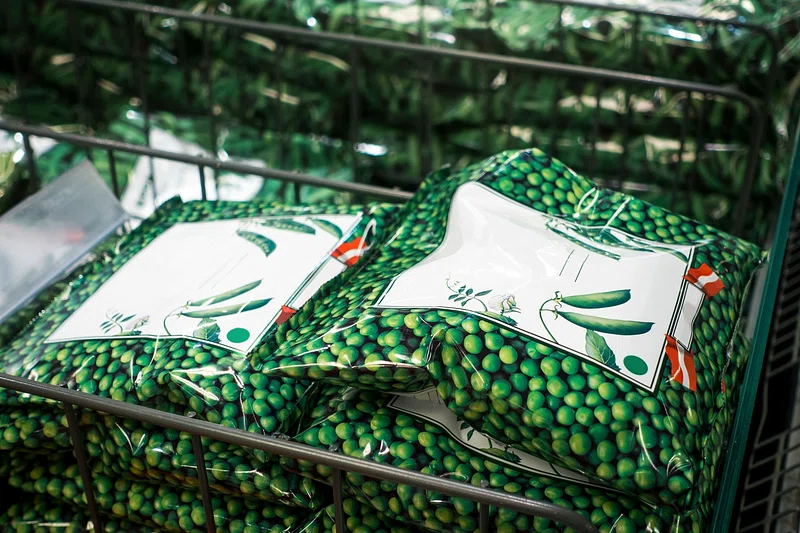
Frozen fruits and vegetables are often just as nutritious as fresh, and they last much longer, which can save you money in the long run. Frozen produce is picked and frozen at its peak ripeness, locking in nutrients and flavor. By purchasing frozen items, you can avoid food waste since they have a longer shelf life. Frozen vegetables and fruits can be up to 50% cheaper than their fresh counterparts, especially when out of season.
Frozen foods are also a great option for reducing trips to the store, as they can be stored for months. This gives you flexibility to use them as needed and avoid the impulse purchases that tend to drive up your grocery bill. In addition to frozen produce, there are frozen options for meats, meals, and even herbs, which can save you money and time. By incorporating more frozen items into your grocery list, you can lower costs without sacrificing nutrition.
9. Sign Up for Store Loyalty Programs

Many grocery stores offer loyalty programs that provide discounts, special offers, and points for every purchase you make. Signing up for these programs is free and can lead to significant savings over time. These rewards often include discounts on your favorite products, coupons for future purchases, and exclusive deals. 80% of shoppers who use loyalty programs save money on groceries and other essentials.
Loyalty programs also give you access to personalized deals based on your shopping habits, which can help you save on items you purchase regularly. For example, you might receive special discounts on your go-to items like eggs or bread. Some programs even offer rebates or cash-back rewards, making it easy to earn back a portion of your spending. By signing up for a store loyalty program, you can maximize savings every time you shop.
10. Cook in Bulk and Freeze Portions
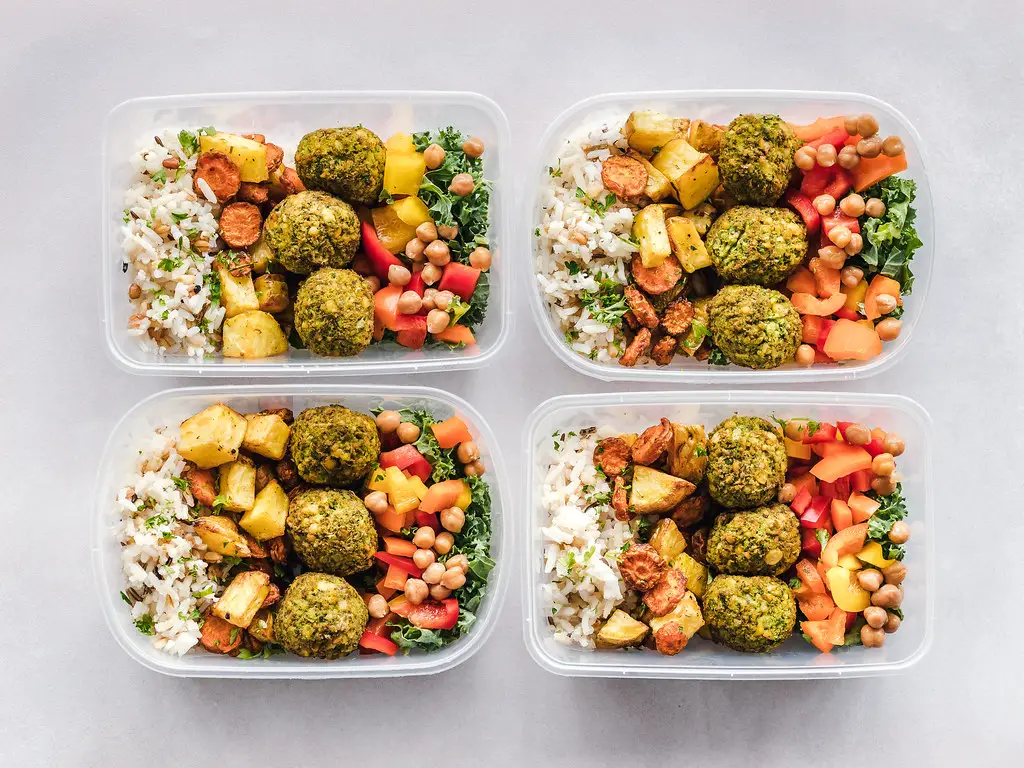
Cooking large batches of meals and freezing portions is an effective way to save both time and money. By cooking in bulk, you can take advantage of cost savings when buying in larger quantities. For example, buying a whole chicken or a large pack of ground beef can be significantly cheaper per unit. Freezing individual portions ensures you have ready-to-eat meals on hand without the temptation to order takeout, which can add up quickly.
Preparing meals in advance also helps you avoid food waste. You can portion out meals and freeze them for later, ensuring that leftovers don’t go bad in the fridge. Additionally, by using leftovers creatively, you can stretch your grocery purchases further. This strategy is especially useful for busy weeks when cooking every night isn’t feasible, but you still want to eat well.
11. Shop at Discount Stores

Discount stores like Aldi, Lidl, and Dollar General are known for offering quality products at significantly lower prices than traditional grocery stores. These stores often have a smaller selection, but they focus on providing basic, high-quality items at a fraction of the price. Shoppers can save up to 30% on their grocery bills by switching to discount retailers for certain items.
Discount stores also tend to offer fewer processed, high-margin products, which means you’ll spend less on impulse purchases. Many of these stores have their own store-brand items, which can be much cheaper than national brands. Whether you’re looking for fresh produce, canned goods, or frozen meals, discount stores can help you save money without compromising on quality.
12. Avoid Pre-Packaged Snacks
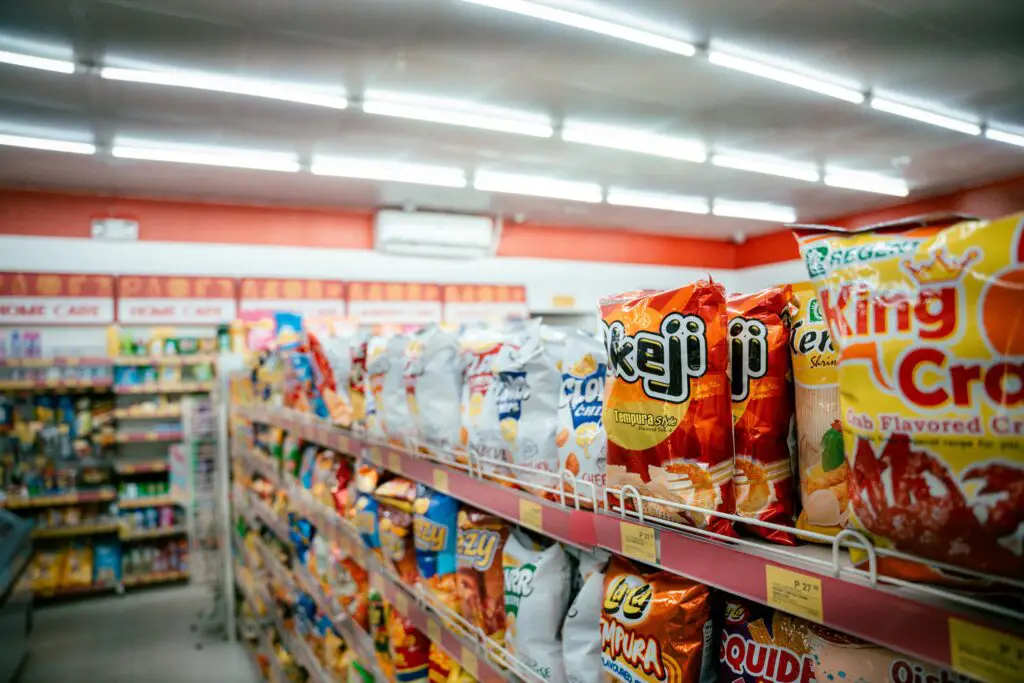
Pre-packaged snacks like chips, cookies, and crackers often have a high markup because you’re paying for the convenience and packaging. Instead of buying these items, consider making your own snacks at home. Homemade popcorn, granola bars, or trail mix are much cheaper to prepare and can be tailored to your preferences. Pre-packaged snacks can cost up to five times more than homemade alternatives.
Making your own snacks also allows you to control the ingredients and reduce added sugars or preservatives. Buying in bulk and portioning out your own snacks is another way to save money. By switching to homemade or bulk snacks, you can cut your snack budget in half while enjoying healthier options.
13. Avoid Shopping When Hungry

Shopping on an empty stomach can lead to impulse purchases, often resulting in unnecessary items being added to your cart. Shoppers who are hungry are more likely to spend 64% more on items they don’t need. The temptation to grab unhealthy snacks and extra food increases when your stomach is growling, so it’s best to eat before you head to the store.
By shopping with a full stomach, you can stick to your list and avoid buying foods that are not essential. Planning your meals and making a detailed shopping list ahead of time can also help you stay focused and prevent impulsive buying. Additionally, bringing a snack with you can keep cravings at bay while you shop. Staying mindful about when and why you shop can significantly reduce overspending.
14. Check Unit Prices
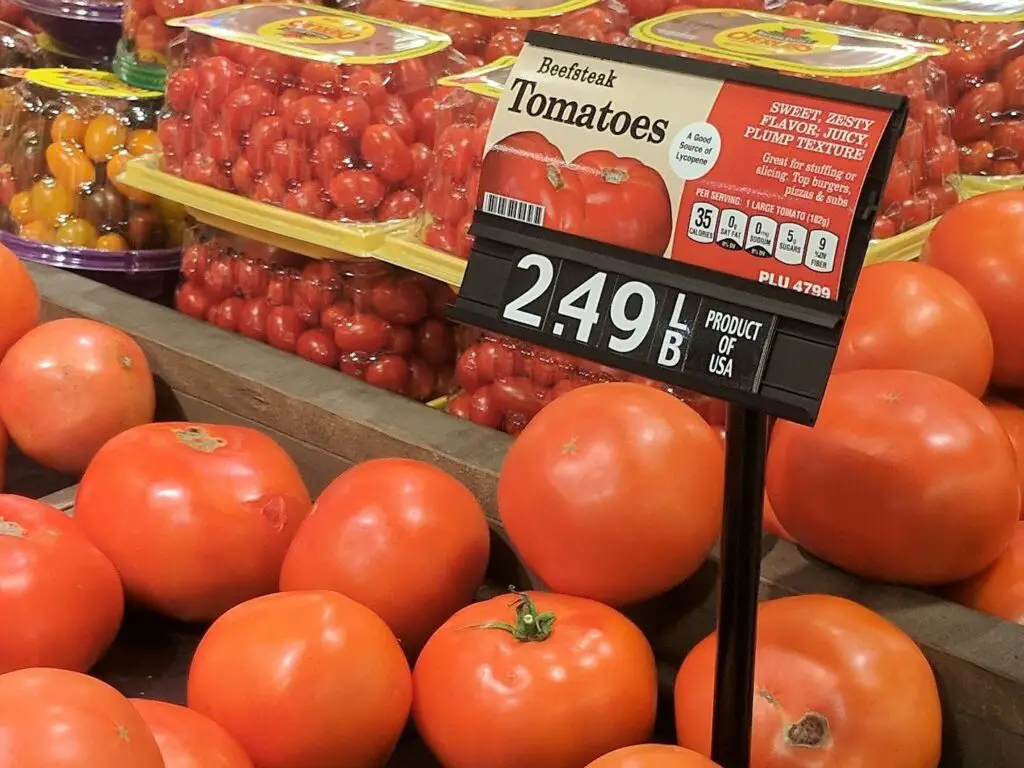
When shopping, always compare the unit prices (price per ounce, pound, etc.) to find the best deals. Unit pricing helps you determine the actual cost of an item, which can be different from the shelf price. For example, a larger bag of chips may appear more expensive, but it could be a better deal per ounce compared to a smaller bag. Comparing unit prices allows shoppers to make smarter purchasing decisions and save money in the long run.
Many stores display unit prices directly on the shelf tag, making it easier to compare items. By focusing on unit prices rather than just the overall cost of an item, you can spot opportunities to save without sacrificing quality. This trick is particularly helpful when shopping for packaged goods like snacks, beverages, and household supplies. Over time, using unit prices as a guide can make a significant difference in your total grocery spending.
15. Take Advantage of “Buy One, Get One” Offers

While “buy one, get one” (BOGO) offers can seem like a great deal, they can actually lead to overspending if not used wisely. BOGO deals can be a good way to save on products you use regularly, but they’re only worth it if the items are things you will actually use before they expire. If you end up throwing away a BOGO item because it spoils, the deal isn’t as great as it seems.
To make the most of BOGO deals, focus on items with long shelf lives or products that are already on your shopping list. When shopping for non-perishable goods, BOGO offers can help you stock up at a lower cost per unit. However, be careful not to overstock on perishables that could go to waste. By strategically taking advantage of these offers, you can significantly reduce the cost of your groceries.
16. Use Cash Instead of Credit Cards

Using cash instead of credit cards can help curb your grocery spending, as it forces you to stick to a set budget. When you use a credit card, it’s easy to overspend because you’re not physically limited by the amount of cash in your wallet. Shoppers who use cash tend to spend 20% less than those who use cards, as they’re more conscious of their purchases.
Paying with cash also prevents accumulating credit card debt, which can lead to added expenses in the form of interest payments. When you carry only the amount of cash you’ve allocated for groceries, you’re more likely to stick to your shopping list and avoid unnecessary purchases. This method helps you prioritize essential items and eliminate the temptation of unplanned buys.
